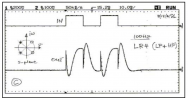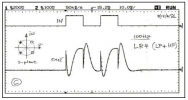No, its much more than a dac - its a dsp two-way digital crossover as well, and you can aparently use USB digital input from a computer as sound source . This unit uses a XMOS at the USB input. The future for highend performance at normal prices looks good.

- Processor: 32-bit floating-point 400MHz Analog Devices SHARC DSP
- Multi-Core USB Audio processor (XMOS)
- Bluetooth streaming: LDAC™/aptX™ HD/aptX™/AAC/SBC
- Optional upgrade to Dirac Live® 3.x Digital Room Correction, Full Range Room Correction (20~20kHz)
- Audiophile performance (SINAD
- Inputs: Stereo digital (USB Audio/SPDIF/Optical/Bluetooth), stereo analog (Unbalanced RCA)
- Flexible Output versions: Unbalanced (RCA), Balanced (TRS), Digital (Future)
- USB audio recording feature (4xCH processed output via USB audio to record inputs, e.g. Vinyl)
- White/Black OLED front panel controller with IR control
The internal DSP of the MiniDSP Flex allows digital processing, including precise EQ and 2-way crossover functionality. However, the almost completely unique feature is its ability to implement FIR based phase coherent crossovers between woofer and tweeter.
It is a fact that any normal analog crossover, and any normal IIR digital crossover that emulates an analog crossover, that has a slope over 6 db/octave, has uncorrectable phase shift. While the woofer and tweeter outputs can be in phase (or 180 degrees out of phase, correctable with a polarity reversal of the tweeter) at the crossover frequency, there is a net phase shift across the audio spectrum. For example, a 12 db/octave crossover has a net 180 degree phase shift from lows to highs across the audio spectrum. A 24db/octave crossover has a net 360 degree phase shift from lows to highs.
This wreaks havoc with phase coherency. It is thus impossible for a speaker system consisting of a separate woofer and tweeter with anything greater than a crossover with a 6 db/octave slope to reproduce a recognizable square wave. To reproduce a square wave correctly, both the amplitude AND phase of each harmonic must be reproduced accurately.
Here is a snapshot of what a 4th order 24 db/octave LR crossover does to a square wave:
The only practical way around the inherent phase shift is to use an FIR (Finite Impulse Response) based digital crossover. This MiniDSP product is one of the very few devices on the market that has FIR based crossover filter capability. It allows a woofer/tweeter based speaker to actually reproduce a recognizable square wave.
Here is one cycle of a square wave from one of my homemade line source speakers using a digital FIR based 100db/octave crossover, in room, with the microphone about 5 feet from the speaker. Note the room reflections starting immediately to the right, and even in the lower half of the square wave.
The question is, is being able to line up the fundamental and harmonics of a square wave accurately audible? Most people can't answer that because they have never heard fundamentals and harmonics properly lined up with near zero phase shift across the audio spectrum from a speaker, and thus can't say if it's audible or not.
Having read of studies on the audibility of phase coherence, and then having experimented with it myself with the MiniDSP 2X4HD, phase coherence (or lack of it) is indeed audible. Here's a link to a study on the audibility of midrange phase shift:
https://www.audioholics.com/room-acoustics/human-hearing-phase-distortion-audibility-part-2
The main audible effect of lining up all harmonics with the fundamental is a less 'speakerish' and more realistic sounding midrange, especially with percussive musical instruments with lots of harmonics. It sounds more like live music and less like speakers reproducing music. 'Midrange transients' sound more realistic. Well recorded applause sounds more like applause. A well recorded solo singer sounds more realistic and 'present'.
I am not financially associated with MiniDSP in any way. I have just experimented with phase coherent crossovers using the older Mini DSP 2X4, and have become strongly convince that phase coherence (or lack of it) is indeed audible. Phase coherency is indeed a step forward in audio reproduction. I am looking forward to getting this new and improved product.




